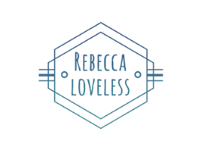
21 Oct Word Bag Excitement
Lyn Anderson (Beyond the Word) first introduced us to the joy of the Word Bag game several years ago now. It’s a simple teaching strategy, but it inspires a kind of magical curiosity in kids. It’s genius.
The teacher creates a set of words that share a base using something accessible like ‘play, climb, or cook.’ Some “trick” words are also added to the bag—words that don’t share the base but may have a slight phonological or semantic similarity. The base is written on the center of a piece of chart paper. A child is invited up to pull a card from the bag, and the teacher asks the group, “Is it in the family?”
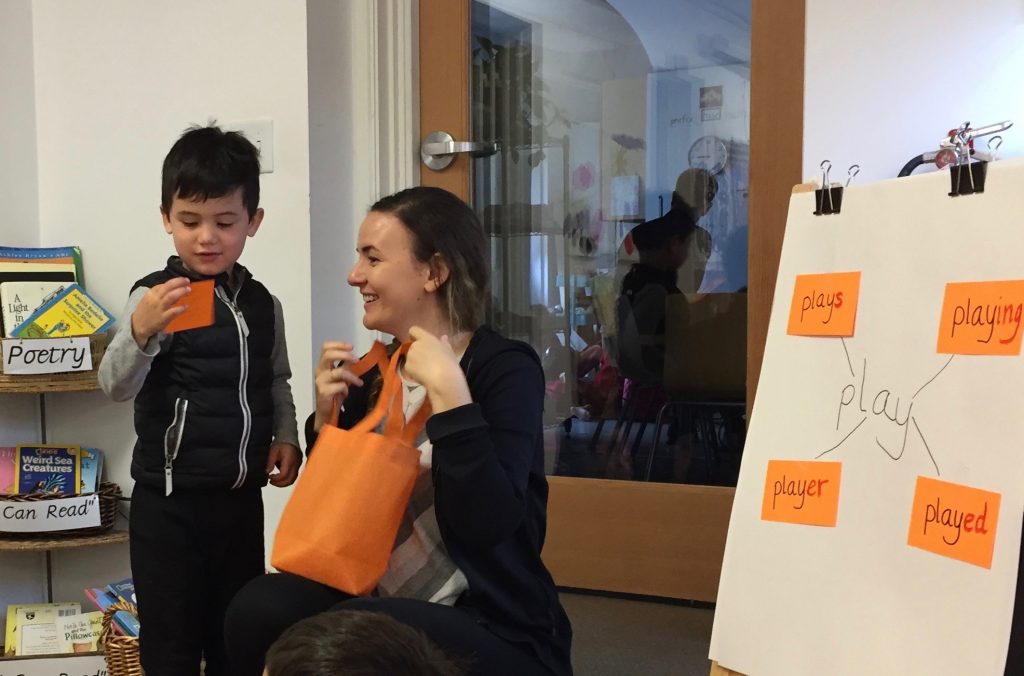
For a more detailed description of the game, clink the link on the top right of my Home page to download the unit “First Time Fun with Word Families.
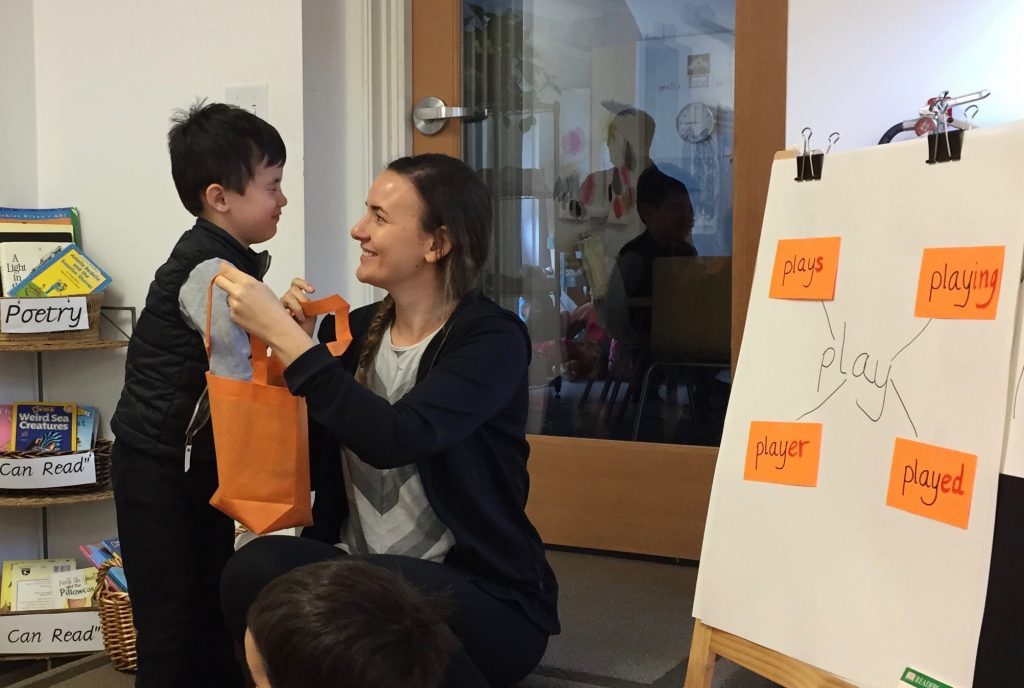
Teachers Carolee and Claire recently introduced their Pre Kindergarten students to the Word Bag game using the base <play>. Here’s a glimpse into that conversation:
A child pulls out a card with < ball > written on it. “Well you CAN play with a ball…,” she says.
But she does not see any evidence of the base’s structure in the word. So, nope, it’s not in the family.
Next < playground > is pulled. “It has the structure!”
As they discuss the meaning of the word, someone calls out, “Ohhh…a compound word.” The child puts his two closed fists together, since one first represents a base. “It’s got the same structure. You do ‘play’ on it.”
They justify the meaning for < replay >.
“You didn’t play how much you wanted so you play again.”
“It’s in the family because it has < play >.”
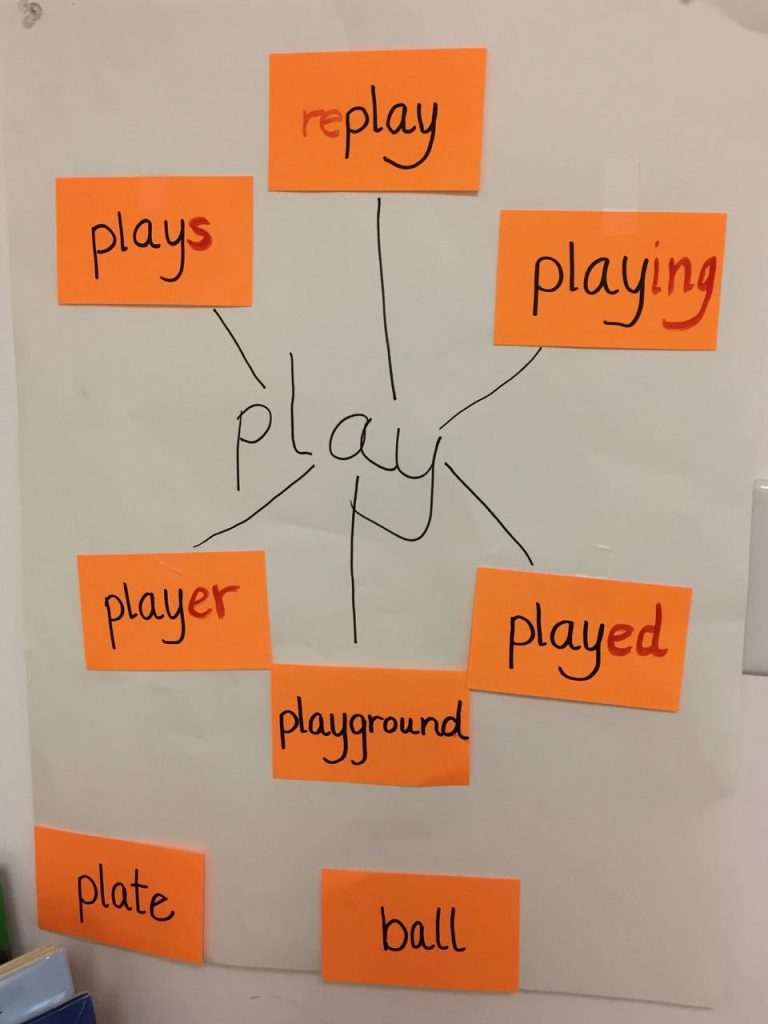
The words that are in the family have a line drawn to them in the web. Those that don’t share a base are added around the edges, without a line.
As the game wraps up and the children get ready to move to open activities, one boy suddenly stands up and announces, “I’m going to make my own word bag! I’ll make new words!”
We three teachers brimmed over with excitement, as this had never happened before. Other children soon became interested as well. A new Word Bag center was born.
The next day a set of child generated cards were put into the word bag, and this time a child led the game. The base element he created was <block>. Immediately a grammatical discussion arose about the use of the base as a noun or a verb.
Child leader: “It’s the family of, like, a unit block over there.”
“Well you could also block someone when they’re trying to walk…”
The child leader chooses someone to reach in the bag and pull out one of his cards.
“Is that in the family?” he asks his friend. She has pulled out < blocky >.
“Yes.”
Child leader: “What does it mean?”
“It means something is blocky.” A logical definition emerges about how when you are building with blocks you are ‘blocky.’
The next child pulls out a card that says < cat >. Clearly the child who made these cards understands that there will be some “trick” cards in the bag.
Right away he says, “It’s not in the family. It means you just see a cat.”
The next girl pulls out < reblock >. “It’s not in the family,” she decides.
Child leader: “What does it mean?”
“Like when you knock down someone’s structure and you rebuild it.” The class reviews the definition given and looks again at the base, ultimately deciding it is in the family.
A note from Carolee:
“If the students can develop a logical meaning and the structure fits, then we do not discourage this creativity. Our language is changing every day with new words added on a regular basis. So ‘it’s not a word YET’ is often an apt phrase.”
The final word chosen is < mom >. “It’s not in the family…because moms can’t block.”
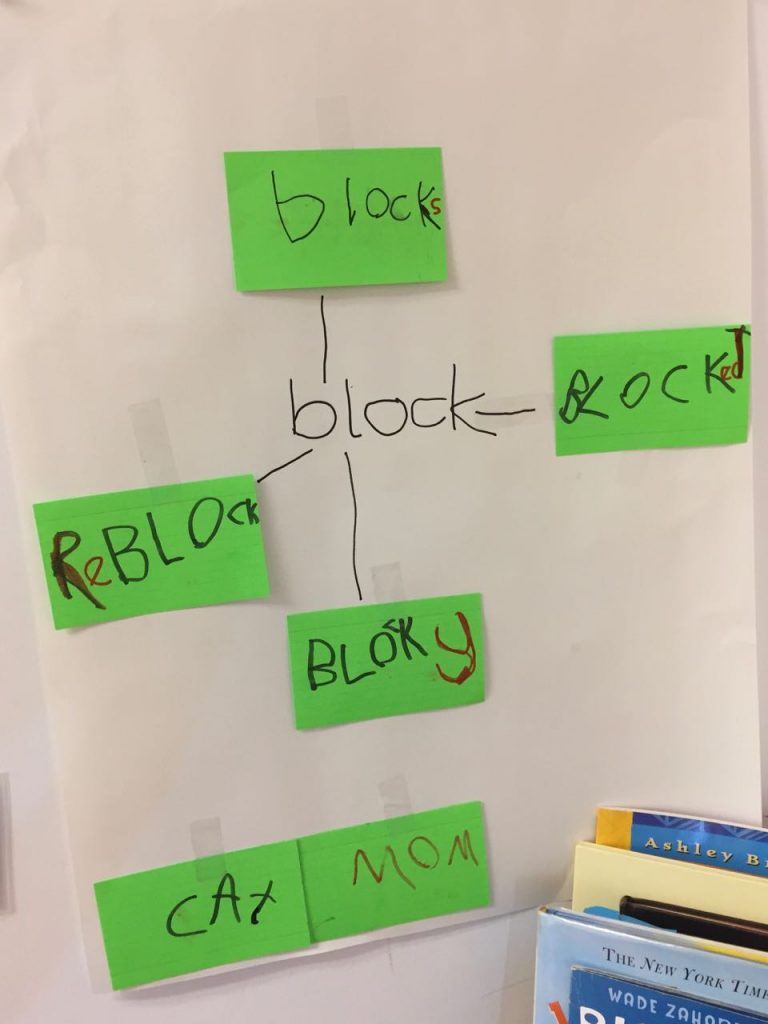
These students are doing exactly what all good students do—they’re using the information their teachers have given them. In this classroom, ‘structure’ and ‘meaning’ are essential components of conversation, and so are ‘phoneme’ and ‘grapheme.’ They are already recognizing suffixes and prefixes because they have been exposed to them and have been given names for them. Some of the children are already reading. These children in particular are gaining so much ground in their understanding of language because they have the vocabulary to talk about and analyze how English words really work. They are on fire about writing and reading.
The children who are less comfortable are equal participants. They watch and share. They can spell out the letters of the bases and affixes, even if they need some support. They are gaining understanding through their oral language by naming these elements and taking in the excitement of their peers.
These young students don’t realize it, but they’re already working with the Four Questions. These questions can guide any investigation for students of any age. There is no SWI set curriculum or scope and sequence; everything that is important enough to be addressed will come up when these questions are used as the basis for investigating words.
1. What does it mean?
2. What is the word’s structure? How is it built?
3. What are the word’s relatives?
4. What’s important to notice about the pronunciation?
It can take awhile for us adults to shift our perception of what appropriate language instruction looks like, and that’s understandable considering all that we have to unlearn and relearn. For students learning with these questions from the beginning, language makes sense. For teachers who have been investigating their practice for awhile, studying orthography, asking difficult questions, and being open to seeing things in a new way, it’s nearly impossible to imagine teaching any other way. The proof is in the mouths, hands, and minds of these four and five-year olds.
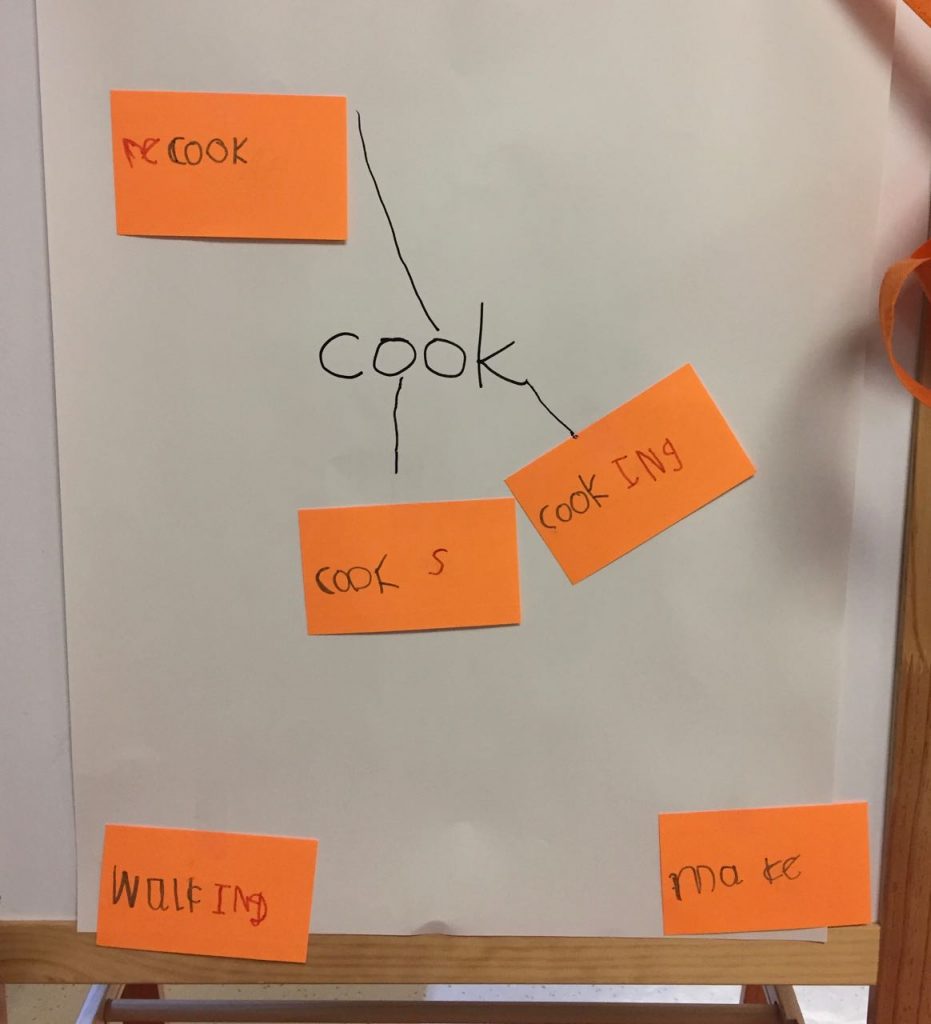
Notice the beginning signs of Real Script instruction in some of the letters.
Many thanks to the PreK teachers for their precise documentation! Stay tuned for my next post to see how we decided to handle student’s non-word contributions, as well as the non-standard form < *builded >.
